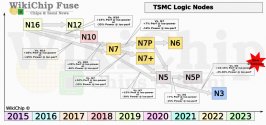Lenovo has started making cores! A shot is a 5nm chip
Although Lenovo's 5nm chip is expected to be used in tablet computers, it is also a very difficult and risky move to use the most advanced technology for the first chip, which requires huge investment and R&D personnel support. It is unclear what the final result of this 5nm chip will be, but at least we see that Lenovo has really built a core, which is a huge improvement.
Recently, news came out that Lenovo's chip company Dingdao Zhixin's self-developed chip has been successfully taped out, and the 5nm process has been adopted. The next step will be related functional tests.
For a manufacturer with such influence in the field of PC and tablet, this self-developed chip is of great significance at present. According to another person familiar with the matter, "Lenovo's chip is specially designed for tablet PC applications."
Increase investment in the chip field
According to the information of Aiqicha, Dingdao Zhixin (Shanghai) Semiconductor Co., Ltd. was established in January 2022 and is 100% controlled by Lenovo. The company type is a wholly foreign-owned enterprise with a total registered capital of 300 million yuan. Its business scope For the design and sales of integrated circuits, as well as a number of businesses in the field of semiconductor technology.Jia Zhaohui, the legal person and executive director of the company, was the senior vice president of Lenovo Group and the general manager of Lenovo Group's global consumer business and advanced innovation center. The general manager of the company, Shi Zhenggong, has worked in companies such as Leadcore, Huawei and OPPO. The company's SoC head Yuan Wei also has work experience in Leadcore. It is reported that Lenovo's chip team has more than 300 people.
The establishment of Dingdao Zhixin for chip self-research is only a small step for Lenovo. Lenovo Venture Capital has also invested in many local chip companies, such as Core Technology, Cambricon, Smartsens, Xinchi, Huaxing Semiconductor, Zhongke Wuqi, Ruisi Zhixin, Suzhou Huiwen, Onray Microelectronics, BYD Semiconductor, Yuguang Technology, etc.
In recent years, Lenovo has also participated in at least 8 investments related to integrated circuits, involving high-quality targets such as Jiehuat Microelectronics, Vodafone Semiconductor, Ruisizhixin, and Fullhan Microelectronics. In terms of coverage, Lenovo has invested in various applications in the integrated circuit industry, including at least AI chips, CMOS chips, IoT chips, 5G RF chips, IGBT chips, optical chips, single-photon sensor chips, semiconductor laser chips, smart audio and video. Processing SoC chips and other fields.

